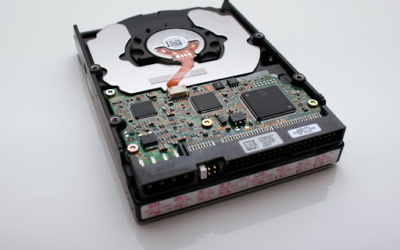Introduction
In today’s fast-paced business landscape, where technology is at the heart of operations, IT equipment plays a pivotal role. From servers and workstations to network infrastructure, businesses heavily rely on these tools to maintain productivity and competitiveness. However, as IT equipment becomes more sophisticated, so do the challenges of maintaining and supporting it. This is where third-party IT equipment support comes into play, offering companies a pathway to significant cost savings, improved efficiency, and peace of mind.
The IT Equipment Conundrum
Picture this: Your organization relies on a network of computers, servers, and other IT gear. They’re the backbone of your daily operations, from processing orders to managing customer relationships. But what happens when something goes wrong? A server crashes, a computer freezes, or your network experiences downtime. In these moments, your business is not only disrupted but could also incur substantial costs.
Traditionally, companies have addressed IT equipment issues through manufacturer warranties and support agreements. While these can be effective, they often come with limitations, including high costs, inflexible service terms, and extended downtime. Moreover, as IT equipment ages and warranties expire, the financial burden of maintaining these assets can escalate.
The Rise of Third-Party IT Equipment Support
Enter third-party IT equipment support providers, a growing industry that specializes in servicing and maintaining a wide range of IT equipment, regardless of the manufacturer. These providers offer a compelling alternative to traditional support models, presenting businesses with a host of benefits that translate into real savings potential.
- Cost Savings
One of the most significant advantages of third-party IT equipment support is cost savings. Traditional manufacturer support contracts can be exorbitant, with annual fees that escalate as your IT environment expands. In contrast, third-party providers typically offer more competitive pricing models, often at a fraction of the cost of manufacturer support. These cost savings can have a direct impact on your bottom line, freeing up financial resources for other critical business needs. - Flexible Service Options
Another key benefit of third-party support is flexibility. Manufacturer support contracts often come with rigid service terms and predefined service levels. This can be problematic, as your IT needs may vary over time. With third-party support, you have the flexibility to tailor service agreements to your specific requirements. Whether you need 24/7 coverage, on-site support, or remote assistance, you can choose the level of service that best suits your business, ensuring that you’re not paying for services you don’t need. - Extended Equipment Lifespan
IT equipment is a significant investment, and maximizing its lifespan is crucial to getting the best return on that investment. Third-party support providers specialize in maintaining and extending the life of IT assets. They offer comprehensive maintenance services that include regular inspections, diagnostics, and preventive measures. By proactively addressing potential issues, third-party support can help you avoid costly equipment failures and extend the useful life of your IT assets. - Faster Issue Resolution
Downtime can be a costly affair. Every minute of system or equipment downtime translates to lost productivity and revenue. Third-party support providers are often known for their prompt response times and quick issue resolution. They have experienced technicians who are well-equipped to diagnose and address IT problems efficiently. This agility can significantly reduce the impact of technical issues on your business operations. - Access to Expertise
Third-party support providers are staffed with knowledgeable experts who specialize in various IT equipment brands and models. This expertise is invaluable when it comes to troubleshooting and resolving technical problems. Whether you’re dealing with server issues, network outages, or hardware failures, third-party support technicians have the skills and experience to tackle a wide range of IT challenges. - Comprehensive Coverage
Third-party support providers offer comprehensive coverage that extends beyond manufacturer warranties. This coverage includes hardware support, software support, maintenance, and even end-of-life support for legacy equipment. It ensures that your entire IT infrastructure is protected and maintained, reducing the risk of unexpected expenses associated with equipment failures. - Reduction in Downtime
Minimizing downtime is a top priority for businesses reliant on IT equipment. Third-party support providers understand this and work diligently to reduce downtime to a minimum. Their proactive maintenance and quick issue resolution help keep your systems up and running, ensuring that your business operations remain uninterrupted. - Customized Support
Every business has unique IT requirements. Third-party support providers recognize this and offer customized support plans tailored to your specific needs. Whether you operate in a highly regulated industry or have specialized hardware and software requirements, third-party providers can adapt their services to meet your business’s distinct challenges. - Peace of Mind
Perhaps one of the most underrated benefits of third-party IT equipment support is the peace of mind it offers. Knowing that you have a dedicated team of experts ready to assist with any IT issue provides reassurance and allows you to focus on your core business activities. It eliminates the stress and uncertainty that can accompany unexpected technical problems.
Real Savings in Action
To illustrate the real savings potential of third-party IT equipment support, let’s consider a hypothetical scenario:
Imagine a medium-sized manufacturing company with an extensive IT infrastructure. They have servers, workstations, network switches, and other critical equipment that keeps their production line running smoothly. Traditionally, the company has relied on manufacturer warranties and support contracts to maintain their IT assets, costing them approximately $50,000 annually.
Switching to a third-party IT equipment support provider, they find a service agreement that covers all their equipment at a cost of $20,000 per year. This change results in an immediate annual cost savings of $30,000. Additionally, the company experiences a 50% reduction in system downtime due to quicker issue resolution and preventive maintenance. This translates to an estimated $25,000 in increased productivity and revenue.
Furthermore, the extended lifespan of their IT equipment allows them to defer hardware upgrades, saving an additional $20,000. In total, the company realizes $75,000 in annual savings and increased revenue by switching to third-party support.
Choosing the Right Third-Party Support Provider
While the potential savings from third-party IT equipment support are compelling, it’s essential to choose the right provider. Here are some factors to consider when evaluating third-party support options:
- Reputation and Track Record: Look for providers with a proven track record of delivering reliable and efficient support services. Customer reviews and references can offer valuable insights into a provider’s reputation.
- Expertise and Certification: Ensure that the support provider has certified technicians with expertise in your specific IT equipment. Certifications from manufacturers can be an indicator of technical proficiency.
- Service Level Agreements (SLAs): Review the SLAs offered by the provider carefully. SLAs define the terms and conditions of service, including response times and issue resolution commitments.
- Customization: Choose a provider that can customize support plans to meet your unique business requirements. A one-size-fits-all approach may not align with your specific IT needs.
- Scalability: Consider your company’s growth potential. Ensure that the support provider can scale their services to accommodate your expanding IT infrastructure.
- Cost Analysis: Conduct a comprehensive cost analysis to compare the expenses associated with third-party support against your current support contracts. Factor in potential savings and increased revenue from reduced downtime.
- References and Testimonials: Request references from existing clients and ask for testimonials to gauge their satisfaction with the provider’s services.
- Security and Data Protection: Verify the provider’s commitment to data security and confidentiality, especially if your business deals with sensitive information.
- End-of-Life Support: Inquire about the provider’s approach to end-of-life equipment. Ensure that they can offer support for legacy systems and assist with equipment replacement when necessary.
- Contract Terms: Carefully review the terms and conditions of the support contract, including the duration, payment schedule, and termination clauses.
Conclusion
Third-party IT equipment support presents a compelling opportunity for businesses to achieve real savings while improving the efficiency and reliability of their IT infrastructure. By offering cost-effective solutions, flexibility, expertise, and peace of mind, third-party support providers empower organizations to focus on their core operations while leaving the complexities of IT maintenance and support in capable hands. When considering third-party support, carefully evaluate providers to ensure they align with your business’s unique needs and objectives. Making the switch to third-party support can lead to significant cost savings and a more resilient IT environment, ultimately contributing to your company’s success in the ever-evolving digital landscape.




